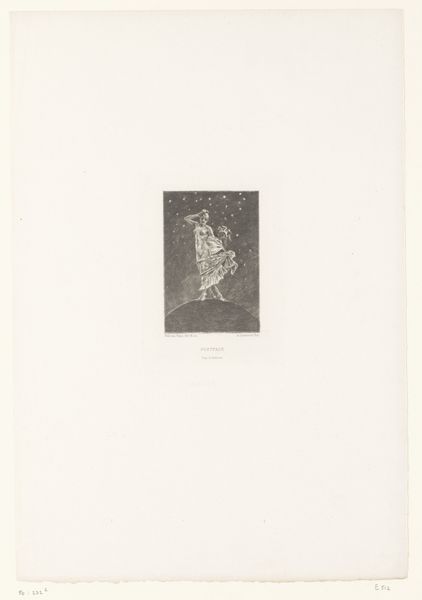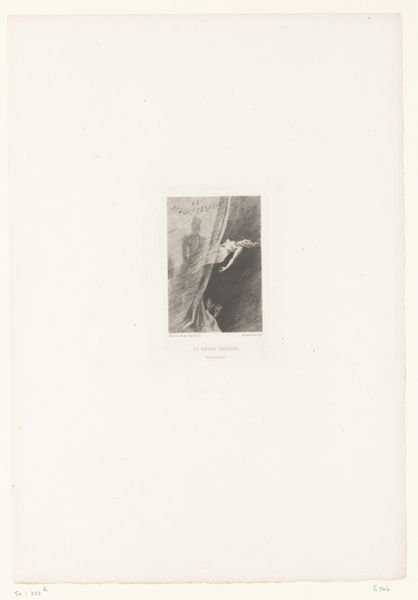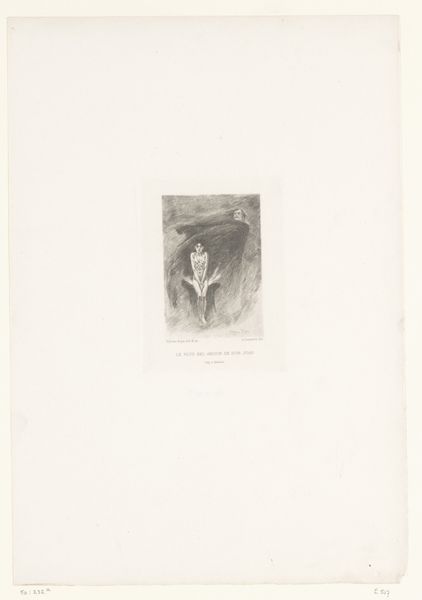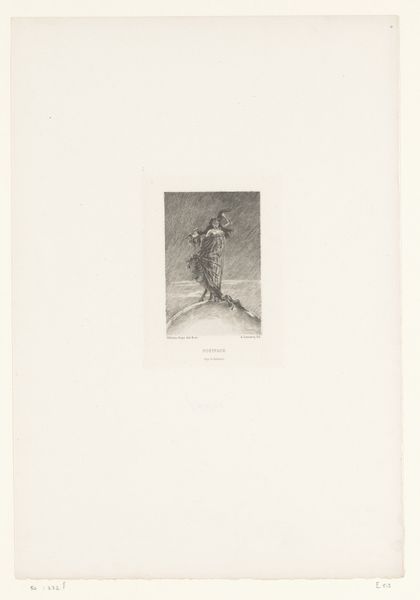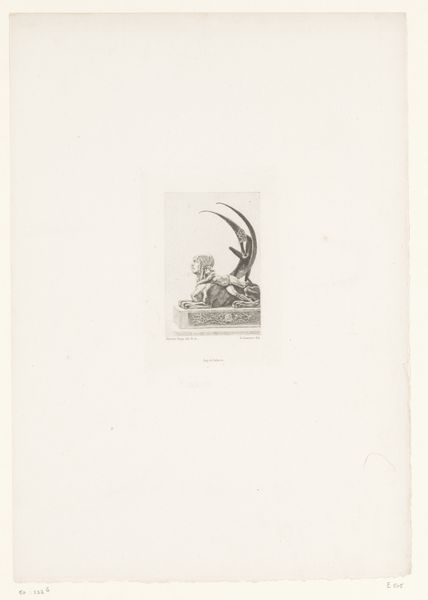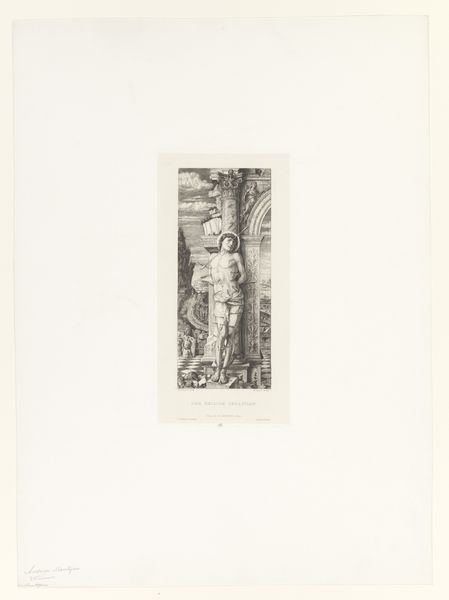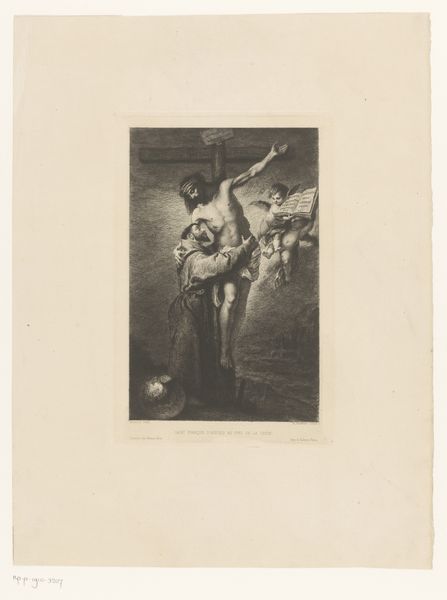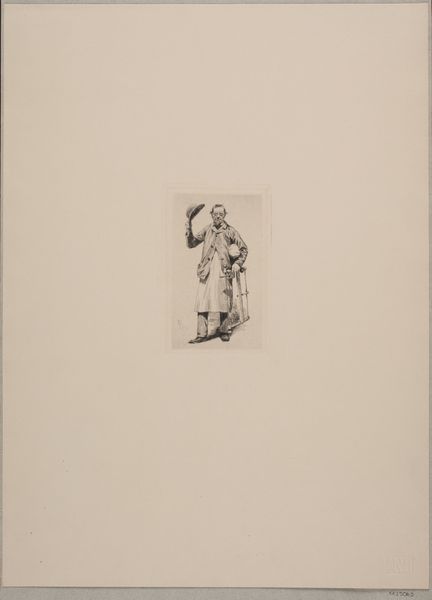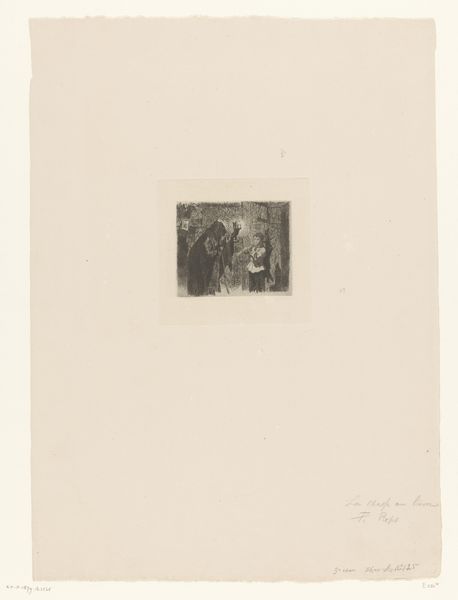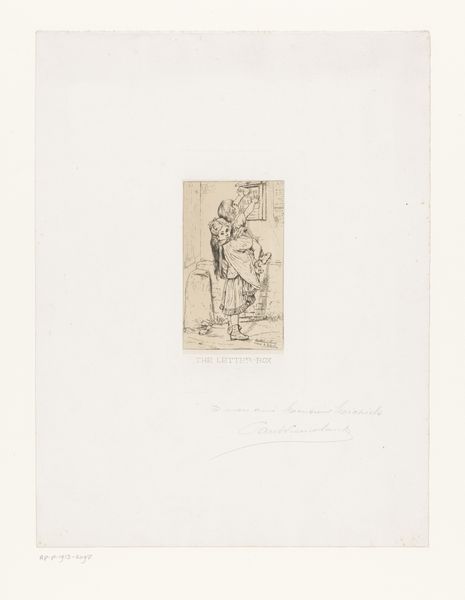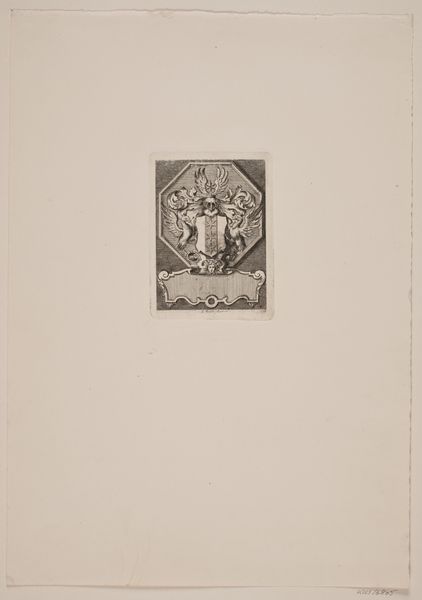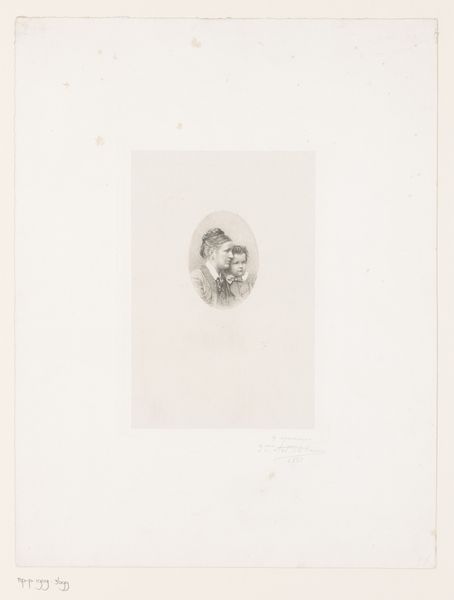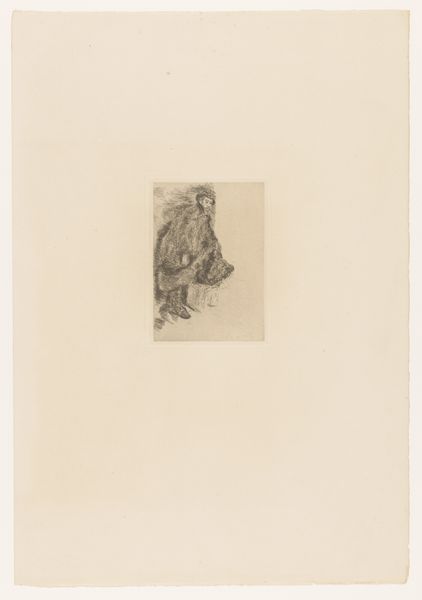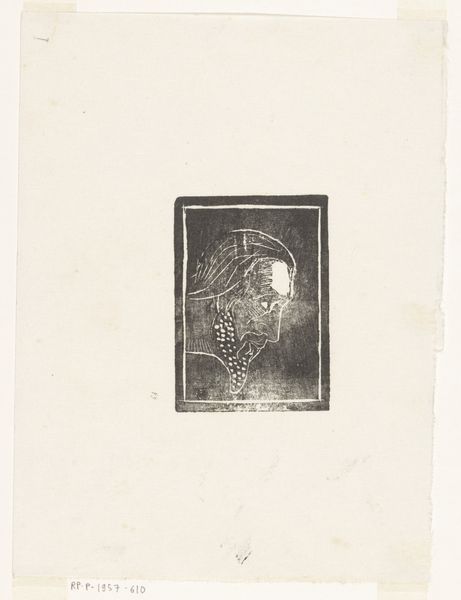
Beeld van een door een dode slang omkruld zoenend koppel achter een Medusamasker waarnaar een figuur reikt 1886
0:00
0:00
felicienrops
Rijksmuseum
print, etching
#
allegory
# print
#
etching
#
old engraving style
#
figuration
#
symbolism
#
erotic-art
Dimensions: height 124 mm, width 90 mm
Copyright: Rijks Museum: Open Domain
Curator: This etching by Felicien Rops, made in 1886, is intriguingly titled "Beeld van een door een dode slang omkruld zoenend koppel achter een Medusamasker waarnaar een figuur reikt", housed here at the Rijksmuseum. It's quite a mouthful, isn't it? Editor: Indeed. My initial reaction is one of morbidity combined with eroticism. There's something very unsettling and sensual happening all at once. The composition, while small, is incredibly dense. Curator: Rops was a key figure in the Symbolist movement, deeply engaged with fin-de-siècle anxieties surrounding sexuality and morality. You see that very clearly here. The Medusa mask, a classic symbol, acts as a focal point, reflecting both danger and alluring female power. Editor: Right, and it's precisely the printmaking process, etching, that lends itself so well to this exploration. The dark, bitten lines and the controlled tonal gradations give a tangible texture to these themes of decay and illicit desire. Think of the acid biting into the plate mirroring those cultural anxieties eating away at social norms. Curator: Absolutely. The snake, a ubiquitous symbol, particularly in late 19th-century art, speaks to temptation and corruption. The embracing couple above are seemingly oblivious, or perhaps consenting, to this looming doom. It underscores the broader social anxieties about pleasure leading to downfall. Editor: The dead snake, to me, suggests more of a defeated material power – perhaps the Church's or the old moral order's decaying influence? Look at how the reaching figure almost longs for that Medusa mask; there’s a sense that the mask represents something desirable, forbidden knowledge maybe. The materials – ink, paper, acid – became potent vehicles for transgressive ideas. Curator: That's a great point; there is definitely a subversive element at play. It goes against traditional narratives of female virtue and male dominance of the Victorian era. And given Rops’ social circle in Paris and Brussels, there’s also a very performative element to this provocation. Editor: Seeing this, it's impossible not to consider how industrial production methods made these challenging images so readily available. Rops made accessible to the masses what had once only been shared in more discreet circles. He pushed the boundaries. Curator: A definite disruptor. Thinking about the context surrounding "Beeld van een door een dode slang…", I'm left considering the enduring power of visual art to expose and critique hidden currents in society. Editor: And from a materialist lens, I am thinking how such art can offer profound insight into how our desires, anxieties and darkest pleasures, take shape through readily available materials.
Comments
No comments
Be the first to comment and join the conversation on the ultimate creative platform.
